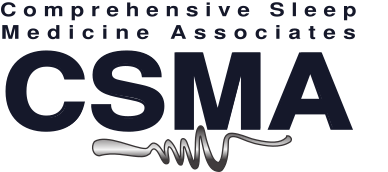Excessive daytime drowsiness is a tendency to sleep at inappropriate times regardless of activity or circumstance. It can manifest itself in mild or severe forms.
Excessive daytime sleepiness is a common problem in today’s society. It is so common that in some circles people almost consider it a normal aspect of a productive society. The fact is that daytime sleepiness and fatigue are leading causes of accidents, both on the job and on the road. The cost to society is estimated in billions of dollars per year. There are several common causes for increased daytime sleepiness. The simplest cause of daytime sleepiness that can be corrected results from insufficient sleep.
The average person requires 7 to 8 hours of sleep per night. If a person routinely gets less than this, it will most likely cause excessive daytime sleepiness. Another common problem can be sleeping in a noisy environment. This can cause many short awakenings, so brief that a person doesn’t remember them the next morning. This results in non-restful sleep with resulting excessive daytime sleepiness. If a person gets 8 hours of sleep a night and still feels sleepy during the day, one should consider that they may have a medical problem which hinders their ability to obtain restful sleep.
A common medical problem that can cause increased daytime sleepiness results from having a breathing problem during sleep. Snoring for example, is a form of obstructed breathing. Obstructive breathing can make it difficult to breathe properly during sleep and can even cause a complete blockage in the airway during which breathing stops. Breathing is re-established with a brief disruption of sleep and possibly a brief gasp or choking sound.
Another common medical problem causing frequent disruptions of sleep is called Periodic Limb Movements of Sleep. This occurs when a person has multiple brief leg movements every 20 to 60 seconds for long periods during the night. These leg movements can fragment sleep, resulting in increased daytime sleepiness. Frequently people with this problem also have what is called Restless Legs Syndrome (RLS). RLS occurs when a person is sitting still or lying in bed, which makes it difficult to keep their legs still. This frequently can keep people awake, causing insomnia. People with this problem feel that moving their legs relieves this restless sensation.
The previous problems are all treatable. Unfortunately, many physicians are not yet familiar with treating these conditions. Ask your doctor about treatment and feel free to have your doctor contact us for questions on diagnosis and treatment for these conditions.
There are many other problems that can cause increased daytime sleepiness, but the most common ones have been mentioned here. What is important to understand is that we need about 8 hours sleep per night to function properly, although some of us need more and others can get by with less. If there is something that causes many brief disruptions in your sleep, then your brain may not get the rest it needs. You may not be aware of these awakenings or disruptions because they are too brief to register in your memory.
If you have a problem with daytime sleepiness and you have increased your sleep length without improving your daytime sleepiness, then you should be evaluated by a Sleep Disorders Specialist. With proper care most people can obtain the treatment they need to improve this problem.

